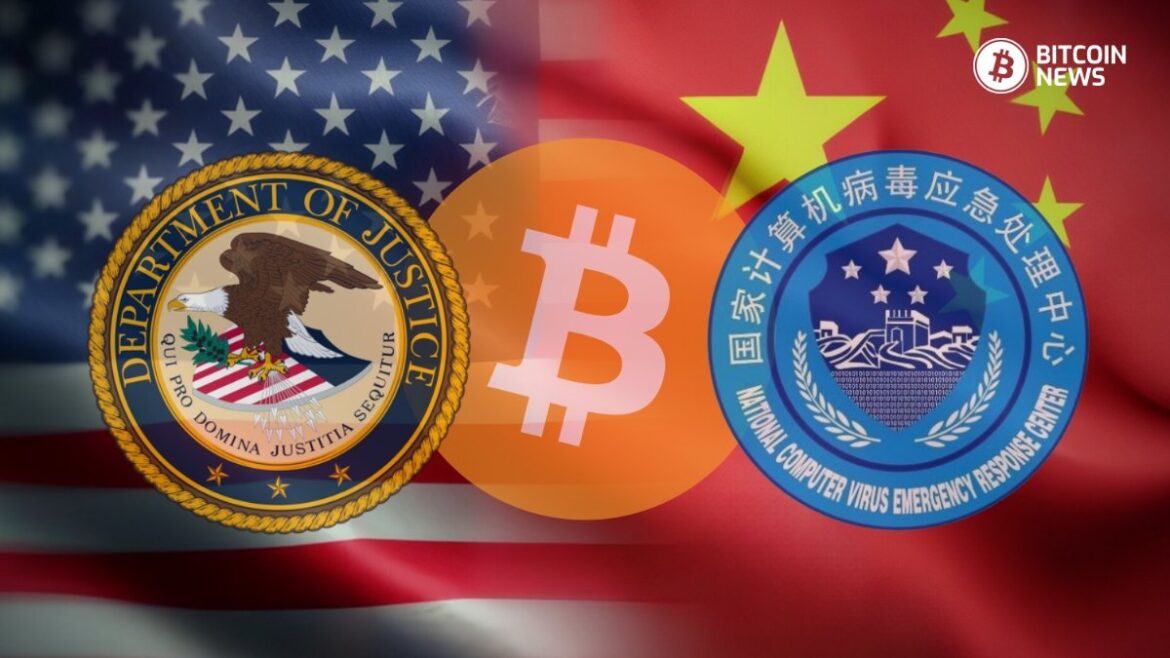Key Takeaways
- China’s CVERC accuses the U.S. of secretly seizing 127,000 BTC stolen from Chinese miner LuBian in 2020.
- U.S. DOJ claims it legally confiscated the funds as part of a fraud and money laundering case.
- The dispute highlights rising digital tensions between the two superpowers over cyber control and digital asset reserves.
China and the U.S. have a new dispute, this time over Bitcoin. China has accused the U.S. government of covertly seizing 127,000 BTC, or about $13 billion, that were initially stolen from a Chinese bitcoin mining company in 2020.
The stash came from the LuBian mining pool, a Chinese company that mined bitcoin. LuBian was hacked on December 29, 2020, and about 127,000 BTC were stolen in just two hours. Those coins were worth about $3.5 billion at the time.
Related: 127,000 BTC Stolen | Biggest Bitcoin Heist in History That Went Unnoticed
China’s National Computer Virus Emergency Response Center (CVERC) recently published a message on its WeChat channel, stating that it has concluded that the hack was done using advanced tools that only a “state-level hacking organization” could possess.
In simpler words, the agency says it was the handiwork of a government, not normal hackers.
After the hack, the coins stayed unmoved for nearly four years. Usually, hackers sell or move stolen money fairly quickly. But in this case, the BTC just sat in the same wallets.
Lubian, who was the owner of the stash, stayed quiet, and didn’t bring the event to the news. The whole hoard remained untouched for nearly four years.
On November 9, CVERC’s report was covered by China’s Global Times, an English-language tabloid newspaper under the Chinese Communist Party’s official newspaper, ‘People’s Daily’.
The report says that such behavior is contrary to the classical scenario of quickly cashing in the loot, and points to a precision operation engineered by a state-level hacking organization.
Meanwhile, Chen Zhi, chairman of Cambodia’s Prince Group, who the report says owned the bitcoin, had been trying to recover them.
In 2021 and 2022, his company sent more than 1,500 public messages over the Bitcoin network, imploring the hackers to return the funds, and offering a reward. The hackers never responded, at least not publicly.


The situation changed in mid-2024, when the BTC stash suddenly started moving to new wallets. Blockchain tracking companies such as Arkham Intelligence and Elliptic followed the movements.
These developments continued a few months later when, on October 14, 2025, the U.S. Department of Justice announced it had seized 127,000 BTC connected to Chen Zhi and his company. The DOJ further charged Chen with operating a major digital asset fraud and money laundering scheme.
The U.S. government maintains it did not hack anyone. It says it legally seized the funds as part of a criminal investigation. According to the DOJ, the coins were criminal proceeds — money earned from illegal activity. DOJ didn’t say how it got its hands on the private keys.
Independent cybersecurity researchers corroborate parts of the U.S. story.
Researchers from Arkham, MilkSad and Elliptic independently found that the LuBian wallets were vulnerable to hacking because they utilized poor random-number software. The flaw allowed hackers to correctly guess private keys and steal the coins.
One technical report connected the issue with a bad random number generator known as MT19937-32 PRNG, demonstrating that the wallet software used by the Chinese miners did not make use of sufficient randomness in generating private keys.
China denies the explanation by the U.S. The CVERC claims the timing and movement of the coins make it look as if the U.S. had control over them long before the 2025 seizure.
The report claims that the available evidence suggests that the BTC confiscated by the U.S. government were the same ones taken from the LuBian mining pool, dating the origin of the incident as far back as 2020.
CVERC also disputes the United States’ claim that all the coins were linked to crime. According to its analysis, about 17,800 BTC came from mining, 2,300 from pool rewards, and 107,000 from exchanges, claiming the funds were not illegal.
This is no longer just a technology story. It has now developed into a political and diplomatic one, too, in which the world’s two largest powers take part.
For China, it’s a case about U.S. interference and digital dominance; for the U.S., merely one about fighting crime. Analysts are seeing this as part of a larger struggle over technology, cybersecurity, and global power.
Many believe the countries of the world, especially the two superpowers, have become interested in stockpiling bitcoin, but neither is interested in buying the asset. Instead, they are fighting over seizing stashes using force.
Many say it could even affect the price of the asset. With $13 billion of bitcoin under government control (either China or the U.S.), traders are afraid that any move by these countries might cause market swings.
The one thing both sides can agree on is that the LuBian hack exposed critical weaknesses in wallet security.
As of now, the 127,000 BTC remain under U.S. government control. China continues to accuse the U.S. of hacking, while the U.S. insists it simply followed the law.
